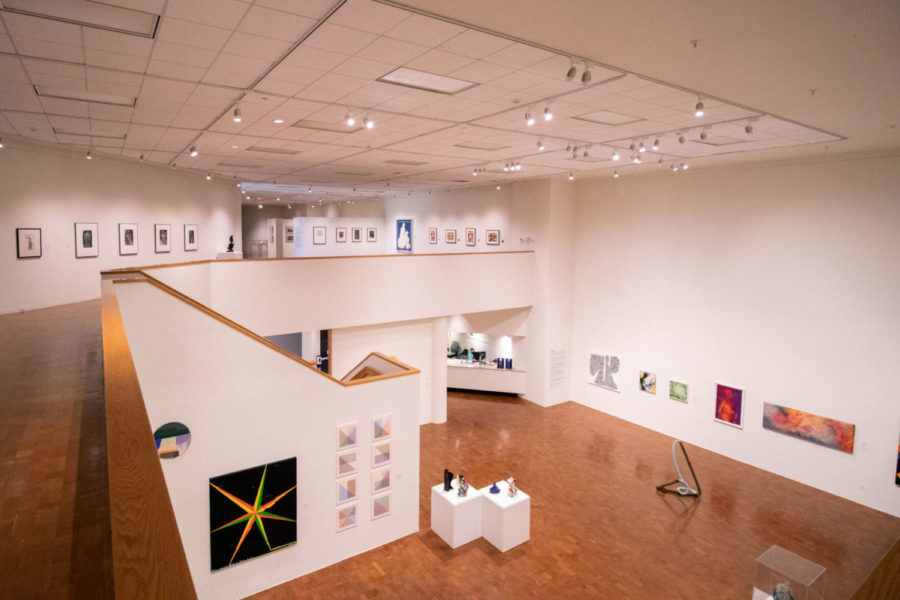‘A playful place.’ UK Art Museum opens new art installation
“Coloring,” the new art instillation at the University of Kentucky Art Museum, is displayed on Tuesday, Oct. 12, 2021, at the Otis A. Singletary Center for the Arts in Lexington, Kentucky. Photo by Amanda Braman | Staff
October 13, 2021
“Coloring,” the latest installation at the UK Art Museum, contains several artworks that spotlight color, and museum curators hope the exhibit will revitalize the experience of viewing art in person.
The arrangement is composed of paintings, drawings, prints and sculptures from artists of varied traditions and eras.
Although much of the collection reflects the abstract characteristics of modern art, each piece has distinctive shapes, dimensions and scales. Viewers are presented with an assortment of artistic disciplines, hard geometries, lush atmospheres, creatively-applied paint techniques and manipulations of scale.
This experience comes as no surprise to UK Art Museum Director Stuart Horodner, who organized the exhibit alongside curator Janie Welker. While the pandemic led many art institutions, including the UK Art Museum, to implement virtual museum content, Horodner said viewing art on a screen is devoid of interaction.
“It’s kind of just information,” he said. “This is the painting [and] what it looks like, this is the color, this is the gesture, this is who made it.”
However, when standing in front of a painting bigger than oneself or a sculpture that is smaller, Horodner said people respond with their eyes and body. This physical response is what separates pandemic art admiration with the experiences available today.
“Your engagement with [art] is totally different than just what the screen gives you,” Horodner said. “For people who love museums and people who also love feeling like the world is a tangible reality, there is nothing like coming to a physical space.”
The diversity of shapes and scales in “Coloring” is one of the most apparent aspects of the new exhibition, made possible by the wide range of contributing artists.
Most of the artwork in “Coloring” was selected from the roughly 5,000 pieces that exist in the University of Kentucky’s art collection. Horodner and his team worked with local artists and collectors to bring the most rewarding experience to University of Kentucky Art Museum patrons. He said the collaboration created a “dialogue between things that we own [and] things that we don’t own.”
This dialogue has led to opportunities for younger artists to have their work presented in context with more established figures. “Coloring” is supplemented by a neighboring installment of “Temple Days,” an exhibit that Horodner said was “selected as an antidote to how colorful this main show is.”
“Temple Days” brings together the work of artists Avantika Bawa and May Tveit. Both artists utilize prints, paintings and sculptures to convey their expressions. Following her most recent installation of pink scaffolding in a salt desert, Bawa uses “Temple Days” to continue that piece’s themes of presence and absence on a smaller scale, using a 3D printer to create miniature shapes.
Tveit creates her prints by pressing graphite-covered cardboard to a canvas to create shapes. Horodner described Tveit’s pieces as “otherworldly,” “resembling religious icons” and “geometrically hypnotic.”
These exhibits marked the first time since the pandemic that artists could come to the museum and personally install their work. Horodner said that combining artworks from a wide scope of artists allows the museum to “take part in research, ideas and experimentation.”
“We love that the museum can be both a serious place and a playful place,” he said.
“Coloring” and “Temple Days” will be on display at the University of Kentucky Art Museum, located in the Singletary Center, until Dec. 11 and will remain free to the public.































































































































































